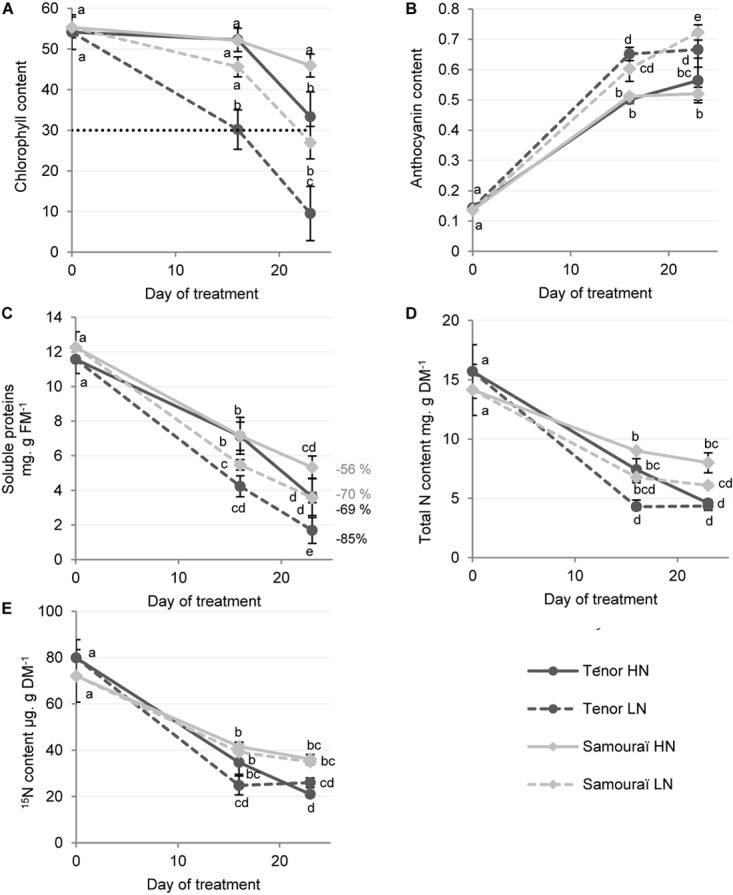FIGURE 1.

Chlorophyll, anthocyanin, soluble proteins and N and 15N contents in leaf blades during senescence in two genotypes of Brassica napus L. supplied with high (HN) or low (LN) nitrate for 23 days. Plants (6 weeks old) of two different genotypes (Ténor and Samouraï) were subjected to ample (HN: 3.75 mM NO3-) or low nitrate supply (LN: 0.375 mM NO3-) for 23 days. Chlorophyll content of the leaf blades of source leaves (L12) were measured with a SPAD meter (A) and were considered as senescent when the chlorophyll content had decreased by at least 40% of the initial value (here the senescence threshold was placed at 30 SPAD units). Anthocyanin content was measured with an optical sensor system (Multiplex) (B). The quantity of soluble proteins was determined after extraction by protein-dye staining (C) and the percentages of degradation between D0 and D23 are indicated. The quantity of total nitrogen (D) and the quantity of 15N (E) were measured by isotope-ratio mass spectrometry (IRMS). Vertical bars indicate ± SD of the mean (n = 3). Statistical differences are represented by letters (P < 0.05, ANOVA, Newman–Keuls test).
